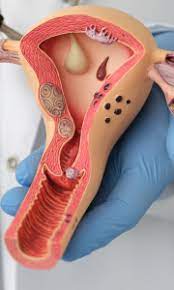
Fibroids are very common and affect more than 80 percent of women at some point in their lives. They can cause heavy bleeding during your menstrual cycle and pain in the pelvic area. They can also lead to complications in pregnancy and infertility. The condition tends to be more prevalent in women of African descent. Several factors affect a woman’s risk of developing fibroids, including her age at first menstruation, her genetic makeup, and her lifestyle.Do you want to learn more? Visit fibroid treatment Houston .
Treatment for fibroids can include medication or surgery. Medications can ease the pain and reduce the size of fibroids. Some medications can prevent heavy bleeding. Hormonal birth control pills and antifibrinolytic drugs are effective treatments. Some women may choose surgery to remove fibroids, such as a hysterectomy.
Although some side effects were common, the procedure is well tolerated. Although a small number of patients may experience a small complication, the adverse effects were non-significant. At three, six, and 12 months after the procedure, patients experienced a reduction in SSS and fibroid volume. Furthermore, there were no unexpected adverse events.
MRI-guided focused ultrasound is one option for treating uterine fibroids. This new treatment was approved by the FDA, but a pivotal trial involving 192 women with symptomatic uterine fibroids found that a majority of patients showed a significant reduction in fibroid size. At six months, the average reduction in fibroid volume was more than 10 points.
In addition to MRgFUS, magnetic resonance-guided focused ultrasound surgery is another option for fibroid treatment. This procedure uses high-energy ultrasound waves to target fibroids and destroy them. The procedure typically takes one to three hours, and women can resume their normal activities within a day afterward. This procedure may also reduce menstrual bleeding. Some women who undergo this procedure can even have children after fibroid treatment.
Another treatment option for fibroids is a minimally-invasive procedure known as uterine artery embolization. This procedure involves inserting a catheter through a small incision in the groin. The doctor will then use fluoroscopy to guide the delivery of small plastic beads into the fibroids. The beads will reduce the blood flow to the fibroid, causing it to shrink. This procedure does not remove the fibroid, but most women report a complete resolution of their symptoms after this procedure. This treatment involves only a small incision in the skin, and recovery times are typically less than two weeks.
This treatment does have a few risks. For example, women with a history of pelvic malignancy or chronic infections should avoid this procedure. There is also a small risk that fibroids may recur or revascularize after this treatment. Furthermore, women may experience amenorrhea after UAE.